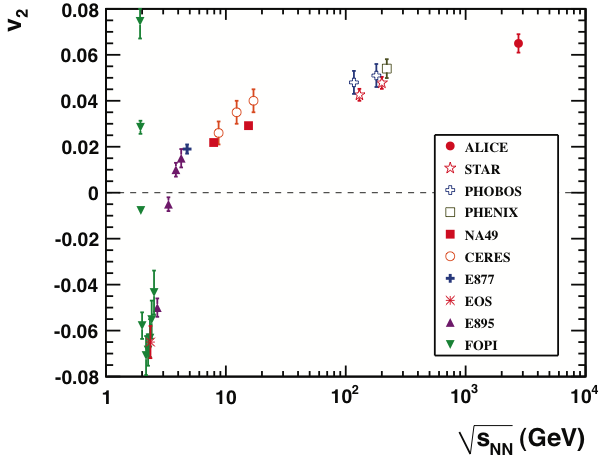Alice!
Tonight, the ALICE collaboration released their first paper. This must be something of a record, as they just started observing Pb-Pb collisions on Nov. 7.
They’ve observed elliptic flow at center-of-mass-energy/nucleon-pair TeV. For those who were sceptical, the quark-gluon plasma is still a strongly-coupled liquid, with very low shear viscosity, at LHC energies — more than a order of magnitude larger than the GeV at RHIC.
As with the proton-proton experiments, they are currently operating at only half the design energy. But, unlike proton-proton, which beat the Tevatron by only a modest factor, the heavy-ion experiments are already probing energies an order-of-magnitude larger than those seen at RHIC.
Below is one of their plots (for , integrated over ). is the coefficient of in a Fourier series of the azimuthal dependence of the particle multiplicity produced in the collision; the larger , the stronger the elliptic flow.

Integrated elliptic flow at 2.76 TeV in Pb-Pb 20-30% centrality class compared with results from lower energies taken at similar centralities


Re: Alice!
A question off topic: what do you think about renormalizations, Jacques? Is it a legitimate and unique means for doing calculations?
Do you believe that we will be able to construct theories without necessity to renormalize them?
Thanks,
Vladimir.